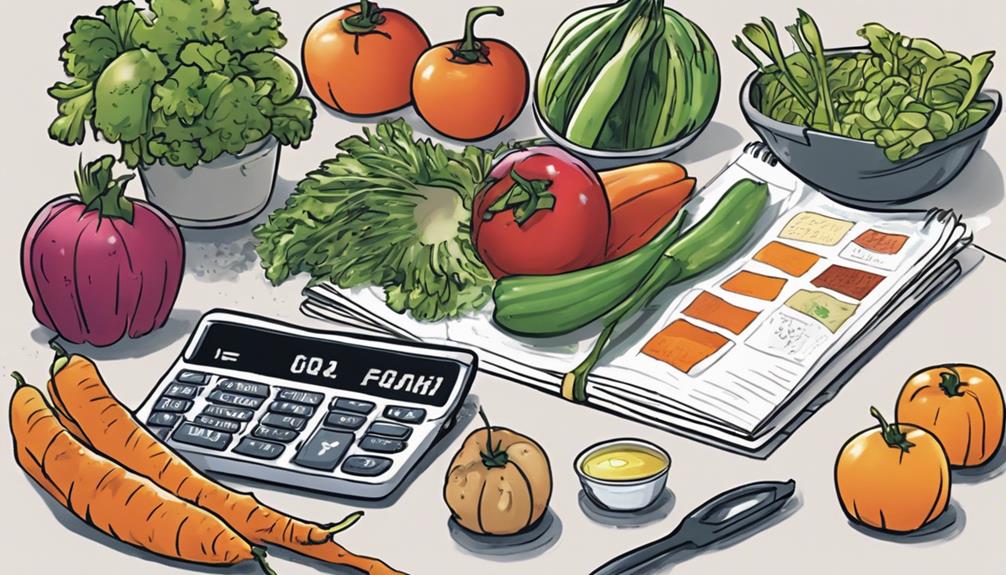Save money while eating healthily with frugal meal planning. Prioritize budget-friendly ingredients, plan strategic meals, and utilize meal prepping. Optimize your grocery budget, minimize waste, and cook in batches. Explore recipes using affordable staples like beans, lentils, and whole grains. Get creative with cooking methods and ingredients like eggs, tofu, and veggies. Set a realistic budget aligned with your income and allocate savings for essentials. Give variety to your meals and savor nutritious foods on a budget.
Key Takeaways
- Incorporate budget-friendly ingredients like beans and lentils for cost-effective meals.
- Optimize grocery budget by meal planning and utilizing pantry staples.
- Utilize batch cooking and meal prep to save time and reduce food waste.
- Explore frugal meal ideas like veggie stir-fry and bean-based tacos.
- Healthy eating can be affordable with whole grains, eggs, and creative recipes.
Frugal Meal Planning Basics

To kickstart your journey into frugal meal planning basics, begin by understanding the core principles of cost-effective meal preparation. Frugal meal planning is all about creating a strategic meal plan that helps you save money on groceries while still enjoying healthy and delicious meals.
By incorporating budget-friendly ingredients and planning your meals in advance, you can stick to your budget without compromising on nutrition.
When crafting your meal plan, focus on recipes that use affordable staples and ingredients, allowing you to stretch your budget further.
Additionally, meal prepping plays an essential role in frugal meal planning. By preparing meals in advance and utilizing leftovers creatively, you can reduce food waste and save both time and money.
Effective Meal Planning Strategies
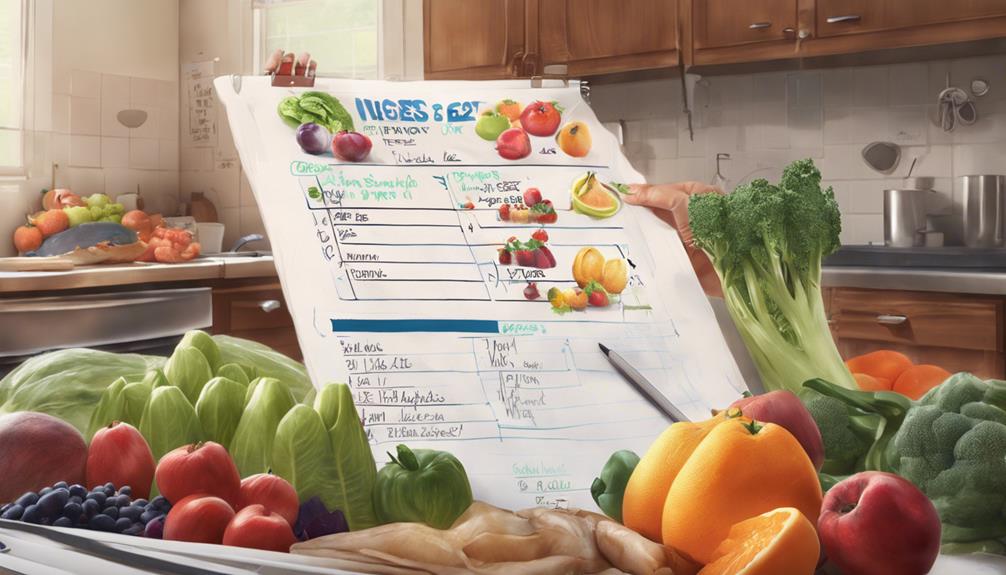
By incorporating efficient meal planning strategies, you can optimize your grocery budget and minimize food waste. To save money and time, plan your meals based on family preferences, utilize leftovers creatively, and include budget-friendly recipes in your meal rotation.
Creating a detailed shopping list before heading to the store can prevent impulse purchases and guarantee you only buy what you need. Batch cooking and meal prep on weekends can save you time during busy weekdays and help you stick to your budget.
Make use of pantry staples and shop sales to maximize savings while still enjoying nutritious meals. Consider planning your meals around available ingredients, portion sizes, and nutritional requirements to guarantee you eat healthily without overspending.
Healthy Eating Recipes and Ideas
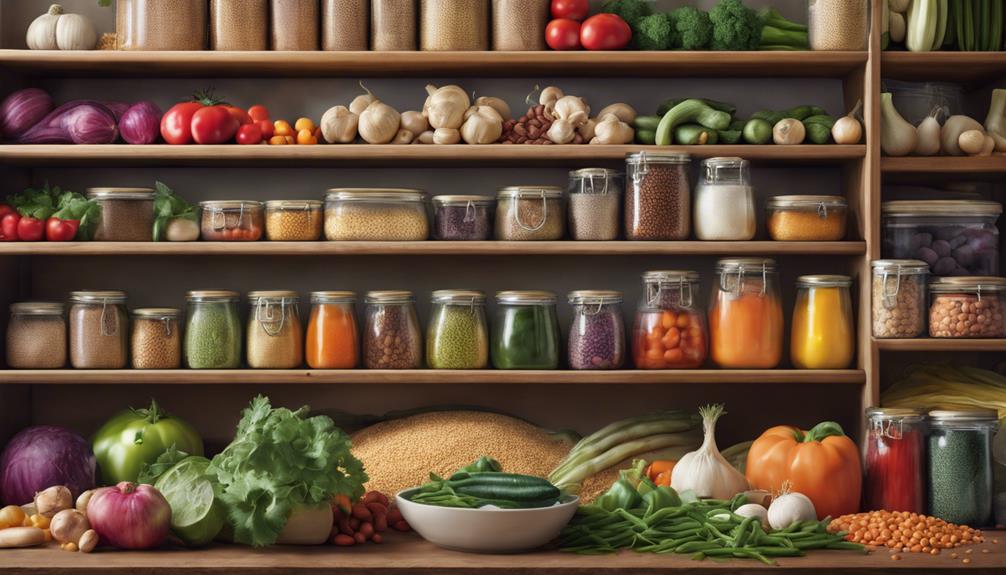
Incorporate budget-friendly ingredients like beans, lentils, and seasonal produce into your meal planning to create healthy and cost-effective meals.
When designing your healthy meal plan, opt for whole grains such as brown rice and oats to boost fiber and nutrients.
For cost-effective proteins, consider using eggs, canned tuna, or tofu in your recipes.
Explore frugal meal ideas like vegetable stir-fry, quinoa salads, and homemade soups for nutritious and affordable options.
To save money while staying healthy, try preparing veggie-packed recipes like frittatas, bean-based tacos, and hearty vegetable stews.
By incorporating these strategies into your meal planning, you can enjoy delicious meals that aren't only good for your health but also friendly to your wallet.
Make the most of these budget-friendly ingredients and recipes to maintain a nutritious diet while saving money.
Creative Meal Enjoyment Tips

Discover creative ways to enhance your mealtime enjoyment with simple but innovative tips. To add mealtime variety, incorporate different cooking methods into your meal planning. For example, try grilling peaches, steaming broccoli, or roasting vegetables to discover new flavors and textures.
Experiment with healthy foods like BBQ chicken pizza, cilantro lime brown rice with steak tacos, and homemade fruit leather to enjoy nutritious choices that are both delicious and frugal. By exploring exciting meal options, such as using peaches in salads or as yogurt toppings, you can make your meals more interesting and satisfying.
Embrace the opportunity to try out diverse recipes and cooking techniques to make your frugal meal planning experience enjoyable and rewarding. Remember, meal enjoyment can be enhanced by incorporating creative ways to savor and appreciate the goodness of nutritious foods.
Budgeting for Meal Planning

To effectively manage your finances while meal planning, it's important to set a realistic budget that aligns with your income. Calculate your monthly earnings and subtract necessary expenses to determine a practical grocery budget.
By setting a frugal grocery budget, you can save money that can be allocated towards essentials like bulk beef or protein powder. Saving on groceries not only aids in meal planning but can also kickstart an emergency fund, contributing to your financial security.
Remember, small efforts in cutting costs and being mindful of expenses can lead to significant savings over time. These savings can accumulate and play an essential role in effective budgeting for meal planning. By following simple frugal living tips, such as meal prepping, buying in bulk, and using leftovers creatively, one can make the most out of their budget for groceries. Additionally, being conscious of energy usage and finding ways to reduce utility bills can also contribute to overall cost-cutting efforts. With consistent application of these practices, individuals and families can enjoy the benefits of financial stability and security in the long run.
Meal Plan Subscription Resources

Maximize your meal planning efficiency by exploring valuable meal plan subscription resources that cater to your cooking needs and streamline your grocery shopping process. Meal plan subscriptions offer a convenient way to stay organized, save time, and make sure you have healthy meals ready to go.
Here are three resources to explore:
- Free Meal Plan Subscription Service: Accessing a free meal plan subscription service can provide you with a structured plan to follow, taking the guesswork out of meal planning and helping you save money by reducing food waste.
- Prep Dish: Simplify your meal prep with resources like Prep Dish, which offers efficient and organized cooking strategies. Their meal planning principles and various options cater to different dietary needs, making healthy eating more accessible and affordable.
- Supportive Community: Engage with a supportive community through meal plan subscriptions for tips, inspiration, and accountability. Sharing experiences and learning from others can enhance your meal planning journey, making it more enjoyable and sustainable.
Tips for Cheap, Healthy Meal Planning
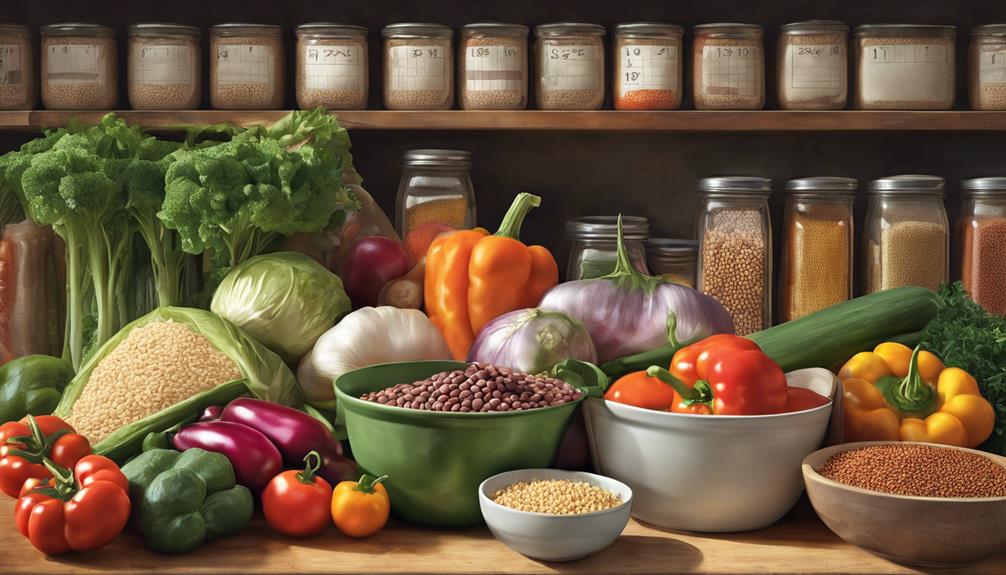
Explore cost-effective strategies for planning healthy meals while saving money. Start by scanning weekly grocery deals to stock up on essential staples at a lower cost.
Incorporating meatless meals into your meal planning is a great way to cut expenses while still meeting your nutritional needs.
Theme nights can simplify your meal planning process and make grocery shopping more efficient.
Additionally, utilizing leftovers from previous meals not only helps stretch your budget but also reduces food waste.
Consider batch cooking and freezing meals for convenient, economical options throughout the week.
This thrifty approach to meal planning ensures that you're making the most of your resources without compromising on nutrition or flavor.
Weekly Meal Preparation Ideas

Consider incorporating these weekly meal preparation ideas to streamline your meal planning and maintain a healthy eating routine.
- Prepare Breakfast Options:
Start your day right by making overnight oats or egg muffins in advance. These quick and nutritious choices will save you time during busy mornings.
- Create Lunch Bowls:
Simplify your midday meals by assembling lunch bowls with grains, protein, and veggies. They're easy to grab and go, keeping you on track with your healthy eating goals.
- Cook Batch Meals:
Save time and money by cooking a large batch of soup or stew at the beginning of the week. Portion it out for simple and satisfying dinners throughout the week.
Essential Grocery List Breakdown
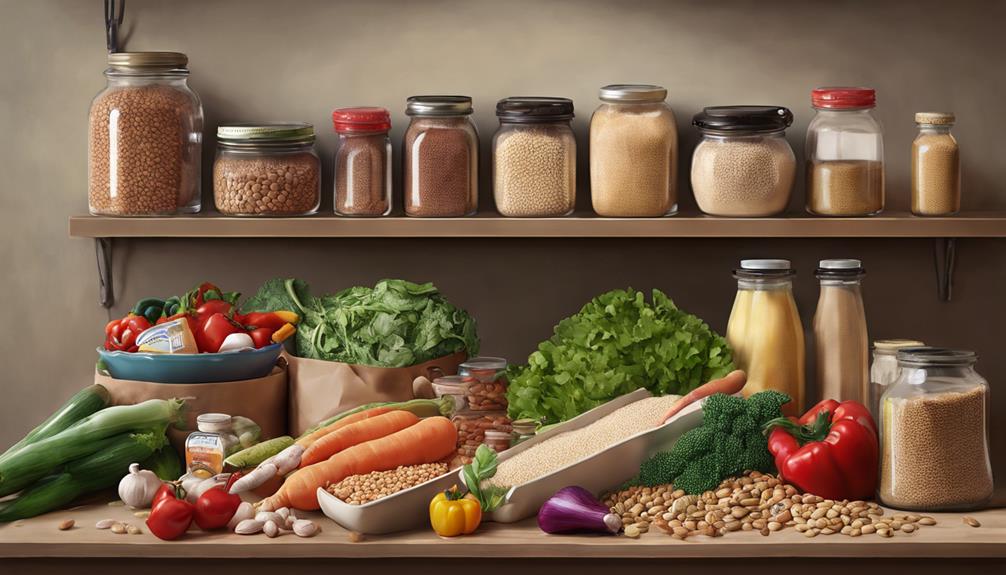
Streamline your meal planning process by breaking down the essential grocery list into pantry items, grocery store staples, specific expenses, and categorized shopping lists.
Pantry items play a pivotal role in frugal meal planning, with essentials like hard-boiled eggs, lentils, and whole-grain pasta forming the foundation for nutritious and budget-friendly meals.
Versatile staples from the grocery store, such as rolled oats, bananas, and nut butter, offer flexibility in creating various dishes while keeping expenses in check.
Understanding the specific expenses of items like Dijon mustard, brown sugar, and olive oil aids in budget planning and guarantees cost-effective meal preparation without sacrificing flavor.
Categorized shopping lists encompassing produce, general groceries, dairy & eggs, meat, and frozen items help you navigate the supermarket efficiently, ensuring you have all the necessary ingredients for well-rounded and satisfying meals.
Benefits of Budget-Friendly Meal Planning

Save an average of $125-$150 per week by implementing budget-friendly meal planning strategies. By engaging in meal planning, you can better manage your grocery budget and avoid overspending.
Here are the benefits of embracing budget-friendly meal planning:
- Reduce Food Waste: Planning your meals ahead of time helps you use up ingredients efficiently, ensuring that you don't end up throwing away unused food items.
- Save Money: With a planned list, you can make one trip to the store, reducing impulse purchases and sticking to your budget more effectively.
- Convenience: Having meals prepared in advance saves you time and stress during busy weekdays. Enjoy the convenience of simply reheating a nutritious meal instead of resorting to expensive takeout options.
Frequently Asked Questions
How to Meal Plan on a Budget Healthy?
To meal plan on a budget healthy, incorporate budget-friendly ingredients, use leftovers creatively, opt for meatless meals, buy seasonal produce, and try batch cooking. These strategies help you save money while enjoying nutritious meals.
How Do I Start Meal Prepping to Save Money?
Start meal prepping by setting a budget, batch cooking, and freezing leftovers. Utilize affordable ingredients like beans and seasonal produce. Plan theme nights for meals and include meatless options to save money and time.
How to Meal Plan Frugally?
Start by checking grocery deals. Build a pantry with staples like rice and beans. Try meatless meals. Plan themed dinners for simplicity. Use leftovers wisely. These strategies help you meal plan frugally while eating healthily.
Can You Save Money by Meal Planning?
Sure, you can save money by meal planning. It helps cut costs by avoiding unnecessary grocery trips and impulse buys. Plus, leftovers and budget-friendly ingredients make nutritious meals. With smart shopping, you'll eat healthy and save!
Conclusion
Now that you've learned the basics of frugal meal planning, remember that the average American household spends around $3,000 a year on eating out.
By utilizing these budget-friendly meal planning tips, you can save money, eat healthier, and enjoy delicious meals at home.
So next time you're tempted to dine out, think about all the money you could be saving by planning ahead and cooking at home!
